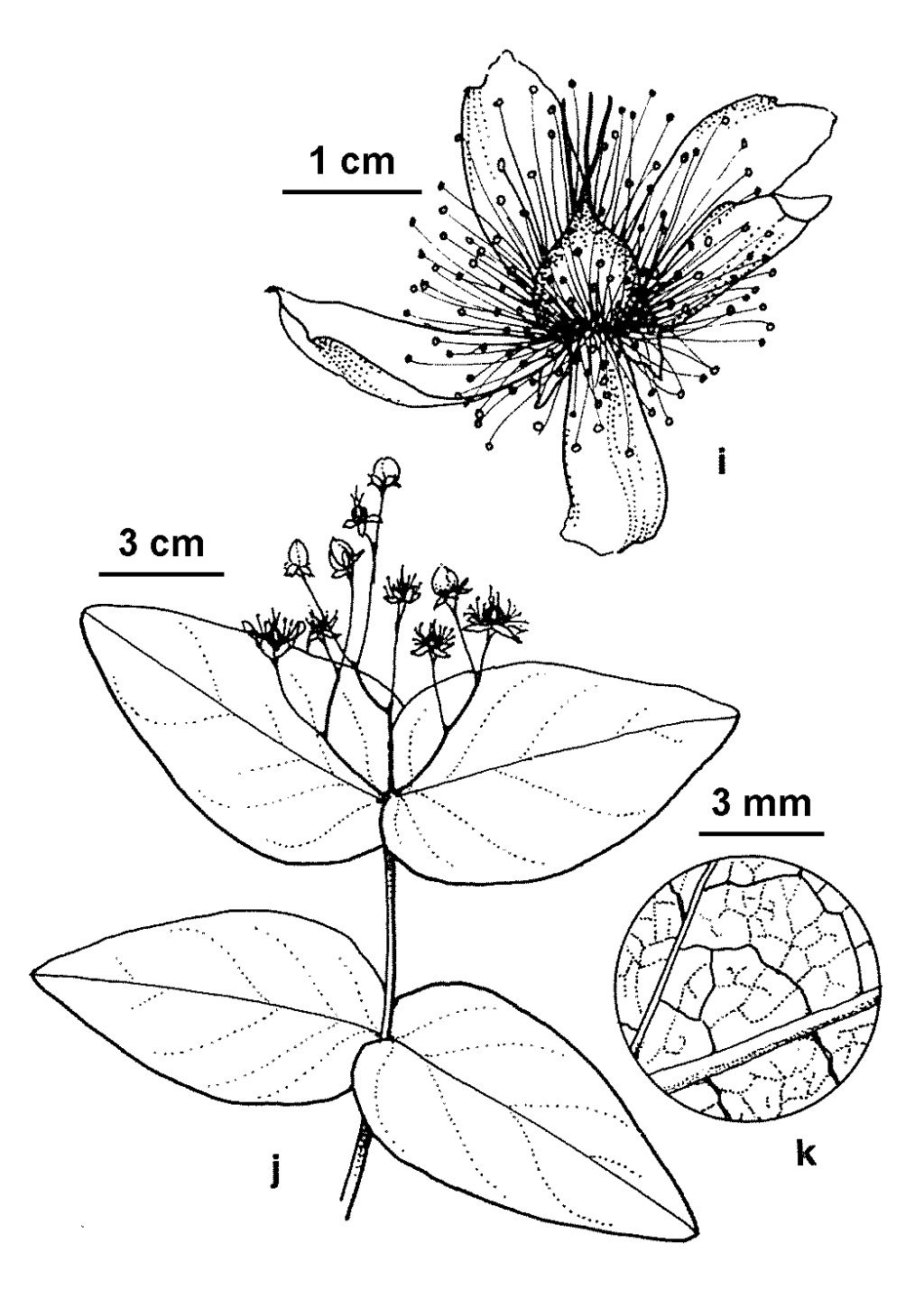Hypericum grandifolium
Choisy- Prodr. Monogr. Hypéric.* 1: 38, t. 3 (1821)
Shrub, 0.5–1 m high; stems indistinctly 2- or 4-ridged. Leaves ovate to oblong-lanceolate, 4–9 cm long, 2–5 cm wide, bases usually cordate, lower surface barely paler than upper, tertiary nerves finely reticulate. Flowers c. 3–15 in terminal corymbs; sepals subequal, lanceolate to oblong, 6–8 mm long, enlarging in fruit, not black-dotted; petals narrowly obovate, 18–22 mm long, golden-yellow, not black-dotted; stamens numerous, united at base into 5 bundles, slightly shorter than petals; styles 3, 2–3 times longer than ovary. Fruit ovoid to ellipsoid, 8–13 mm long, completely dehiscent, yellow or reddish; seeds ovate, keeled or narrowly winged, c. 1 mm long. Flowers Oct.–Jan.
Wim, VVP, GipP, NIS, EGL. Native to the Canary Islands. Apparently confined to the Hamilton district where a weed of roadsides, rail-lines and bushland (e.g. at Mt Napier).
Walsh, N.G. (1996). Clusiaceae. In: Walsh, N.G.; Entwisle, T.J., Flora of Victoria Vol. 3, Dicotyledons Winteraceae to Myrtaceae, pp. 316–321. Inkata Press, Melbourne.
 Spinning
Spinning

